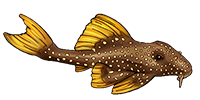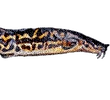https://doi.org/10.1111/jfb.14428
https://onlinelibrary.wiley.com/doi/abs ... /jfb.14428
Larval growth and survival of catfishes are largely influenced by the various biotic and abiotic factors. The present study investigated the effect of different light intensity and photoperiod on growth and survival of larvae. Three separate trials of 21 days each were carried out in an aquarium tank. In the first trial, we investigated the embryonic changes (based on hatching rate and time) upon exposure to varied light intensity (0, 300, 500, 900 & 1200 lx) and photoperiodic regime (24 l: 0D, 16 l: 8D, 12 l: 12D, 8 l: 16D & 0 l: 24D). Subsequently, hatched out larvae were subjected to the above intensities (Trial II) and photoperiod (Trial III, intensity of 300 lx) for growth and survival attributes. 800 healthy larvae (average body weight = 0.003 g) were randomly distributed into the five treatment groups for the last two trials. Results suggest a higher embryo hatching rate and larval survival at 0 and 300 lx, while the largest larval growth was observed at 900 lx. In Trial III, survival was highest in 0 l: 24D and growth in 24 l: 0D and 16 l: 8D was higher (p < 0.05). Performance index was higher (p < 0.05) in both 0 and 300 lx light and decreased in higher intensities. Overall interpretation from the present study concludes that a completely dark rearing environment is recommended for better survival of O. bimaculatus fish although growth was compromised.





